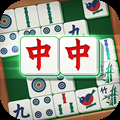Raid Shadow Legends Faction Wars Guide - Theria Games

Introduction to Faction Wars in Raid Shadow Legends
Embarking on the journey of Faction Wars in Raid Shadow Legends marks a significant step in your progression through the game, often considered one of the ultimate endgame activities. Raid Shadow Legends Faction Wars is a challenging feature that requires you to strategically deploy champions belonging to specific factions, each with its own unique strengths and weaknesses, to conquer their respective Crypts. These factions are varied and include a diverse range of characters, from the mighty Banner Lords to the elusive Dark Elves, and each faction offers its own set of challenges. Successfully navigating the 21 stages within each Crypt requires careful planning, tactical thinking, and a deep understanding of your champions’ abilities and synergies.
The difficulty progressively increases as you advance, with tougher enemies, more complex mechanics, and formidable boss encounters awaiting you at critical stages. Conquering these stages not only rewards you with valuable resources like Glyphs and Forge Materials—essential for enhancing your champions’ gear—but also contributes towards the grand prize of the powerful Legendary champion, Lydia the Deathsiren. Lydia is a highly sought-after character known for her incredible utility, making her a game-changer in many aspects of the game. Earning Lydia through the complete clearance of all factions is a long-term goal for many players and a testament to your skill and strategic prowess in Raid Shadow Legends.
Understanding the Structure of Faction Wars
Understanding the fundamental structure of Faction Wars is key to making consistent progress and ultimately achieving success in Raid Shadow Legends. Each Faction Crypt is comprised of 21 distinct stages, each progressively more difficult and filled with unique challenges that test your strategic capabilities. At critical intervals, specifically stages 7, 14, and the final stage 21, you’ll face boss encounters that require careful preparation and team composition to overcome. These bosses often come with powerful abilities and unique mechanics that force you to think critically about how to approach each fight. To advance through these stages, you must successfully clear each preceding level, ensuring that your team is strong enough to tackle the increasing difficulty with each step.
Moreover, each stage presents specific challenges, such as needing to meet certain conditions or using specific factions or champion types, which adds another layer of strategy to the experience. By meeting these criteria while completing the stage, you earn stars, which play a significant role in unlocking more valuable rewards. Accumulating more stars is crucial, as it not only grants you access to higher-level rewards but also enhances your chances of collecting the resources needed to improve your champions and gear. The primary incentive for delving into these Crypts lies in the acquisition of Glyphs, which are key items used to enhance the substats of your artefacts.
These Glyphs can significantly boost your champions’ overall power, giving them a crucial edge in both Faction Wars and other in-game activities. In addition to Glyphs, you’ll also gather Forge Materials, which are essential for crafting powerful gear sets like Resilience Sets (HP +10%, DEF +10%) and Perception Sets (ACC +40, SPD +5%). These sets provide considerable benefits, offering increased survivability and strategic flexibility, ensuring that your champions are well-prepared for the most challenging encounters within the Faction Wars and beyond. Thus, mastering the intricacies of Faction Wars is not only about defeating enemies but also about acquiring the resources and gear that are pivotal for progressing in Raid Shadow Legends.
The Importance of Team Composition and Synergy
As you dedicate time to Faction Wars in Raid Shadow Legends, you’ll quickly realise the paramount importance of team composition and synergy. At first glance, it may seem like the more Legendary champions you possess, the better your chances of success. However, you’ll soon discover that more often than not, a well-coordinated team of Epic and Rare champions can outperform a haphazard collection of high-tier Legendaries. This is because Faction Wars requires not just raw power but strategic planning and tactical thinking, which makes team synergy even more important than individual champion strength. The philosophy here is less about possessing the absolute ‘best’ champions and more about strategically assembling the ‘right tools’ for each specific encounter.
A balanced team typically incorporates at least one Attack champion for dealing area-of-effect (AoE) or high single-target damage. These champions can quickly eliminate waves of enemies or deal significant damage to bosses, providing your team with the momentum needed to progress through tougher stages. Additionally, a strong Support champion is essential to keep your team alive and functioning throughout the battles. Support champions can heal, revive fallen allies, or provide buffs that enhance the effectiveness of your other champions, ensuring they perform at their best.
Along with these, a debuffer capable of Crowd Control is invaluable. Debuffers can apply detrimental effects, such as reducing enemy damage, decreasing their defense, or even disabling their abilities through stuns, freezes, or other forms of control. These Crowd Control effects can make a world of difference, especially when facing difficult bosses or waves with numerous enemies.
The remaining slots in your team can be filled by additional champions fulfilling any of these crucial roles, depending on the specific challenges of the stage. For example, if you’re facing enemies that deal heavy damage, consider adding champions with strong defensive abilities or those that can provide shields or buffs to mitigate incoming harm. On the other hand, if you’re dealing with an enemy team that can revive or heal itself, you may want to include champions that can block those abilities or apply debuffs like poison or burn to inflict continuous damage.
It’s also important to adapt your team based on the enemy composition in each stage, as some stages will require more offense, while others may require more defense or control. By carefully selecting and adapting your team, you’ll optimise your chances of success and improve your overall progression through the Faction Wars, ensuring that your champions are always equipped to face whatever challenges lie ahead.
General Strategies for Navigating Faction Wars
To effectively navigate the numerous stages of Faction Wars in Raid Shadow Legends, adopting sound general strategies is essential for steady progression and long-term success. One of the most important pieces of advice is to engage with Faction Wars daily. Consistency is key to maximizing your rewards and ensuring you continue to build up the necessary resources, such as Glyphs and Forge Materials, which are crucial for enhancing your champions and progressing in the game.
Neglecting this daily engagement means missing out on a steady flow of these valuable resources, putting you at a disadvantage compared to players who remain active in Faction Wars. These resources are not only essential for upgrading your gear but also for boosting your champions’ power, giving you a substantial edge across all facets of the game, including PvP, dungeons, and other events.
As you embark on your Faction Wars journey, aim to tackle the highest difficulty stage that your current roster can handle. Pushing your champions to clear tougher stages rewards you with better loot and more stars, but it’s important to be realistic about what your team can accomplish. If time is a constraint, you can also opt for a less challenging stage that you can clear swiftly, which still yields rewards and allows for steady progression. This approach helps you stay consistent and avoid burnout, as trying to clear overly difficult stages without the proper setup can lead to frustration and wasted resources.
As you progress deeper into the Crypts, you’ll encounter increasingly difficult enemies and more complex mechanics. At this point, remember that sustain often trumps raw damage. While high damage output is important, skills focused on healing, reviving fallen allies, increasing defense, decreasing enemy attack, and blocking harmful debuffs tend to be far more valuable in the long run, especially when facing waves of enemies that chip away at your team over time.
Cultivating high HP on your healers and revivers is a particularly useful strategy, as it not only increases their effectiveness but also influences the AI to target them less frequently. This gives your support champions more time to perform their crucial roles and keep your team in fighting shape.
Furthermore, for particularly troublesome waves or stages featuring enemies with persistent unkillable buffs or other disruptive mechanics, you may need to take a more hands-on approach. In these instances, manually targeting specific enemies at the outset of the battle can be an effective tactic to prevent frustrating stalemates. By focusing your damage on key enemies early on, you can neutralize threats before they have a chance to build up their defenses or apply harmful buffs.
This strategy is especially useful in later stages, where certain enemies may seem nearly impossible to defeat if you don’t take control of the battle from the start. By refining your approach and adapting your strategy to each stage’s unique challenges, you’ll be able to steadily progress through Faction Wars and unlock the full potential of your Raid Shadow Legends account.
Overcoming the Difficulty of Later Stages
The later stages of each Faction Crypt, particularly stages 18 through 21, present a significant increase in difficulty compared to the earlier floors. As you progress through these levels, the enemies become more resilient, their mechanics more complex, and the challenges far more demanding. Often, the final few waves, or even stages 19 and 20, can pose a greater challenge than the final boss itself, requiring more than just brute force to defeat. These encounters frequently require specialised team compositions and a deep understanding of enemy skills, making it crucial to carefully plan your team and strategy for each stage. It’s not just about having powerful champions; it’s about knowing the right tools for the job.
For instance, stages that feature multiple Valkyries or enemies that can block revives demand specific strategies to overcome, as Valkyries are notorious for their ability to deal massive damage and apply unkillable buffs to themselves and their allies. Dealing with enemies that block revives requires you to either bring champions that can bypass these effects or adapt your strategy to focus on sustained damage and crowd control. These kinds of battles often require a mix of offensive and defensive strategies, as one wrong move could cause your team to collapse under relentless pressure.
When facing bosses, understanding their attack patterns and passive abilities becomes absolutely crucial. Some bosses may focus on applying debilitating debuffs such as Provoke, which forces your champions to attack the boss instead of focusing on healing or other strategies, or True Fear, which can prevent your champions from acting. These effects can completely cripple a team if not properly accounted for, making it essential to bring champions with immunity buffs or debuff removal abilities. Other bosses may have passive abilities that can Freeze attackers, disrupting your ability to deal damage and turn the tide of battle. Knowing how these bosses behave and preparing accordingly can be the difference between victory and defeat.
In certain situations, unconventional strategies can also be employed to bypass particularly challenging boss mechanics. For example, the “Paragon-cheese” strategy, which involves using Skullord and Skullsworn to create an almost unkillable team, can be effective in dealing with tough bosses, particularly when their mechanics rely heavily on killing champions or preventing healing. However, this strategy isn’t always viable and may not work on stages where revive-blocking enemies are present, or where the enemy’s mechanics are specifically designed to counter such approaches.
Beyond team composition and specific strategies, utilizing crowd control abilities like stuns, freezes, sleeps, and provokes can be a game-changer in mitigating the threat posed by both waves of enemies and bosses. These crowd control effects prevent enemies from taking actions and can be used strategically to disrupt their attack patterns, giving your team the time needed to recover, heal, or eliminate a key target.
By carefully considering the enemy composition and tailoring your team to counteract these threats, you’ll be able to approach the later stages of Faction Wars with a higher level of preparation and a better chance of success. This strategic depth makes the final stages of Faction Wars some of the most rewarding and satisfying parts of the game, where mastering the intricacies of your team and the enemy’s mechanics is essential for ultimate victory.
Champion Star-Rating and Gear Considerations
Deciding which champions to elevate to 6 stars in Raid Shadow Legends is a critical resource management consideration that can significantly impact your progression. Generally, your primary damage dealers will benefit most from the stat increases provided by a sixth star, as they gain substantial boosts to their attack, defense, and health, making them more resilient and capable of dealing higher damage.
However, many support champions, especially those focused on healing, reviving, or providing buffs, can still perform their essential roles effectively at level 50, provided they have sufficient survivability through gear. For example, champions like Armiger, known for his utility and crowd control abilities, can be very effective even at lower levels if equipped with the right gear and used in the right team compositions.
Regarding gear, beyond simply focusing on stats, considering specific sets can greatly enhance your team’s overall effectiveness. Lifesteal gear is particularly valuable for damage dealers, as it provides sustain by allowing them to heal for a portion of the damage they deal. This is especially important in prolonged battles where staying alive is just as crucial as dealing damage. Similarly, Regen sets can help keep key support champions alive over extended fights by providing passive healing, ensuring they can continue to heal, revive, or shield your team.
Furthermore, equipping champions with Stun sets, particularly those with AoE skills like Armiger, can provide valuable crowd control, disrupting enemy turns and preventing them from executing their abilities. This not only neutralizes enemy threats but also allows your team to take control of the battle, turning the tide in your favor and giving you the opportunity to deal more damage while limiting the enemy’s ability to retaliate. By carefully selecting which champions to elevate and tailoring their gear to their roles, you can enhance your team’s overall effectiveness and increase your chances of success in the more challenging stages of the game.
The Ultimate Reward: Lydia the Deathsiren
The ultimate reward for your dedication and strategic prowess in Faction Wars is Lydia the Deathsiren. This powerful Legendary champion serves as a testament to your accomplishment and provides significant value across various areas of the game. Even the journey towards Lydia is laden with valuable resources that can accelerate your account progression, aiding in fragment events, fusions, and overall champion development.
Preparing for Faction Wars 2.0
Looking towards the future, the developers have announced an upcoming Faction Wars 2.0, which is expected to introduce a harder difficulty mode. In preparation for this new challenge, it is prudent to revisit your existing Faction Wars teams and identify areas for optimisation. Focusing on ensuring you have a reviver in each faction, coupled with reliable control options and effective damage dealers, will provide a strong foundation for tackling the tougher content. Experimenting with different champion builds and gear sets within your current capabilities will allow you to refine your strategies and be better equipped for the trials ahead.
Conclusion: Mastering Faction War
In conclusion, Faction Wars represents a substantial investment of time, effort, and resources, but the rewards it offers in the form of Glyphs, Forge Materials, and ultimately Lydia the Deathsiren are more than worth the challenge. These valuable resources not only enhance the power of your champions but also provide critical components for progressing further in the game. By taking the time to understand the core mechanics of Raid Shadow Legends Faction Wars, prioritizing team synergy, and employing sound strategies, you can steadily advance through each Faction Crypt.
As you refine your approach, you will gradually unlock the full potential of your champions and maximize your account’s strength. Success in Faction Wars is not just about raw power—it’s about strategically assembling teams that can tackle each stage’s unique challenges. Consistent engagement is crucial, as is the ability to adapt your tactics to the specific needs of each encounter. Whether it’s adjusting team compositions or optimizing gear, staying flexible and dedicated will allow you to overcome the toughest obstacles. Ultimately, the key to mastering this pivotal endgame feature is persistence and adaptability, ensuring that each stage brings you closer to unlocking the ultimate rewards and achieving long-term success in Raid Shadow Legends.













